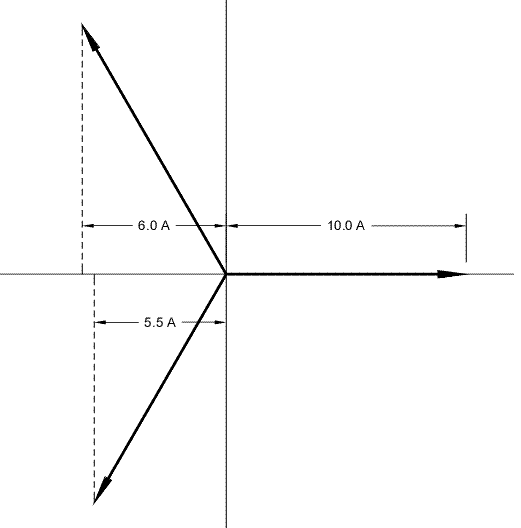As such, are we taking into consideration whether the current of the other branches is incoming or outgoing at that particular time for the sake of such notation? No. Our only concern is the point in time (albeit the rotational or cyclic angle) at which the positive peak occurs relative to a timing or angle reference.
I believe your premise is in error. Instantaneous measures are always at 0?. While you are considering that statement, let me give you an example which doesn't require any "current sense" to obtain a result:
The system configuration is 208Y/120 3? 4W.
Connected to this system, we have a mwbc with the following loads:
Line 1 (?A) is 10A, 0.9pf
Line 2 (?B) is 15A, 0.85pf
Line 3 (?C) is 20A, 0.95pf
Determine the neutral current for this mwbc.
FWIW, the answer is 11.62A. Though we generally have little concern with the phase angle of the neutral, if we need to know and we use the convention V_A@0?, V_B@120?, V_C@240?, then the phase angle would be 44.4?.

